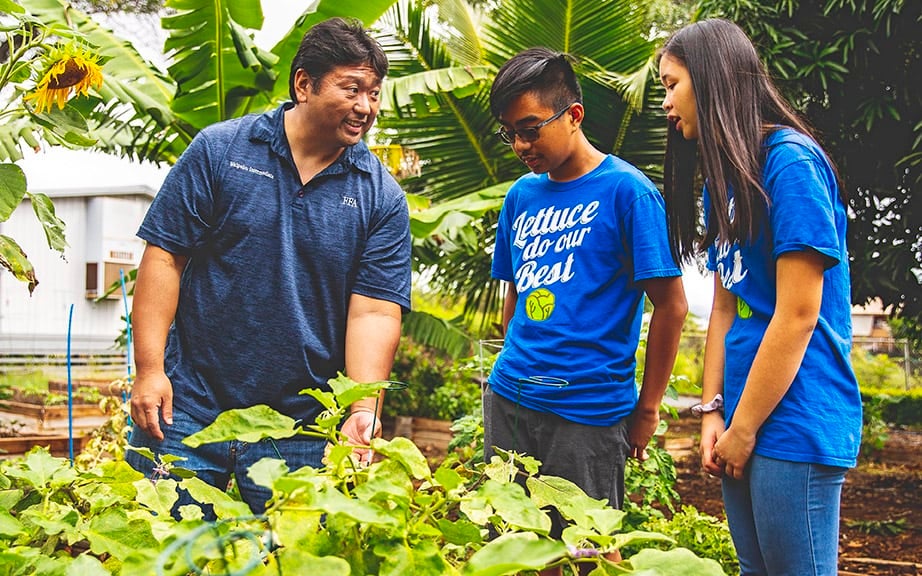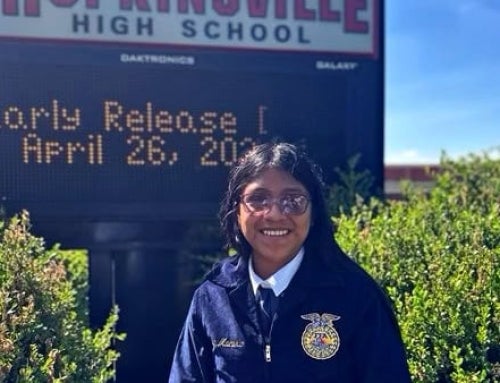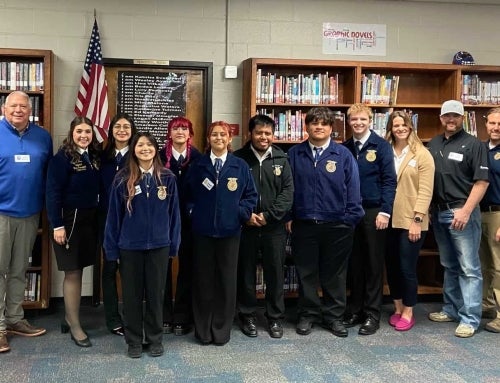To download the Ag 101: Soils infographic, click here.
It’s a state as lush in landscape as it is in history. Stretched across eight main islands (Hawaii, Maui, Oahu, Kauai, Molokai, Lanai, Niihau and Kahoolawe) far-flung off the western coast of the United States, the topography of Hawaii consists mainly of soaring volcanoes that plunge into low coastline.
The islands were colonized roughly 1,500 years ago. Farming practices then, as in most developing areas, were primitive and labor intensive. It’s a part of Hawaiian history that some FFA members from Waipahu, about 30 minutes west of Honolulu on the island of Oahu, reflect on and respect. But while these members admire the past, they are forging ahead in a new era. They strive to grow, lead and succeed through agricultural education. In Hawaii, FFA is in bloom.
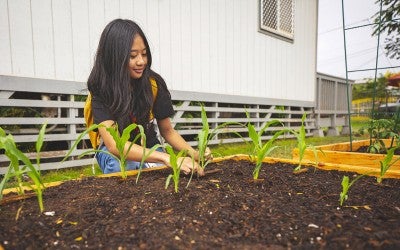 Agricultural Education Ecosystem
Agricultural Education Ecosystem
The Waipahu Intermediate FFA Chapter is regarded as a model FFA program in Hawaii. It is one of only two middle school FFA chapters in the state and the only middle school chapter on Oahu. The island may be small, but the 150 members of this urban chapter learn big lessons about agriculture and food. (A year-round tropical climate is ideal for growing many crops, including coffee, macadamia nuts, sugarcane, pineapple and many other fruits, and its access to the ocean makes fishing and aquaculture a staple.) Members maximize lawn space on the school grounds, build their own raised garden beds and grow their own vegetables as part of their supervised agricultural experience (SAE) projects.
“One-third of our FFA experience is an SAE, and I require all my students to do an agriscience project,” says Ken Kozuma, the agriculture teacher and FFA advisor at Waipahu Intermediate School, which serves eighth-graders. “At their age, I think that’s the best SAE for them to do; they research and experiment. They are growing things from ground zero. A lot of times, in the beginning, I have to encourage them to just do it, just try something. Then they learn through trial and error.”
Kozuma partners with Jeffrey Garvey, the agriculture teacher and FFA advisor at Waipahu High School just up the road, to create an agricultural education ecosystem that captures students’ attention at a young age, then excites them to continue to participate through high school.
“In the last two years, our intermediate school classes were just introductory – the basics of agriculture,” Kozuma says. “But after attending a National Association of Agricultural Educators conference last year, I decided to focus this year more directly on agriscience and experiments.” The courses are similar to a core agriculture class offered at the high school and provide a nice, broad base for students who decide to continue ag education after eighth grade.
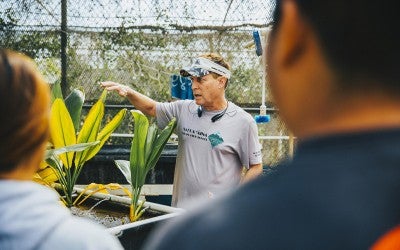 “The high school goes in depth in more areas,” he adds. “It offers more specialized classes.”
“The high school goes in depth in more areas,” he adds. “It offers more specialized classes.”
“I have more of the applied courses,” Garvey explains. Students at Waipahu High School, “ultimately work heavily on job training and learning to run our aquaculture and hydroponics systems, doing disease testing and microscopy work, growing algae and doing other things in our biotech class.”
They also familiarize themselves with standard protocols, procedures and checklists that come in any business, Garvey says, by checking various aspects of the tilapia tanks in the aquaculture system. “What do you do when you show up at your job in the morning?’’ he asks students. “You don’t pull out your phone. You go right to work, check everything, write things down, report incidents.” Garvey simulates what students would do at a real job, so even if they don’t go into agriculture, at least they come out of there knowing how to work better.
Keeping Members Engaged
The agricultural education ecosystem in Waipahu has captured FFA members’ attention. “I’m very interested in chemistry and physics, so being able to see how even the smallest measure of life, like a cell, can play into agriculture interests me,” says Waipahu Intermediate FFA member Cheydon Agos. “I joined FFA because I was working on a science project and my science teacher thought I should talk about it with Mr. Kozuma to get another point of view. When Mr. Kozuma started talking about different aspects of my project and FFA, it opened my eyes to a whole new agricultural perspective.”
“There’s so much you can do in agriculture, and you meet a lot of people,” adds Waipahu Intermediate FFA member Kayla Nguyen. “FFA is like one big ohana [family], and it’s amazing that you can share your passions in agriculture with people across the country. No matter what education or career I decide to pursue, I know I’ll always advocate for natural resources.”
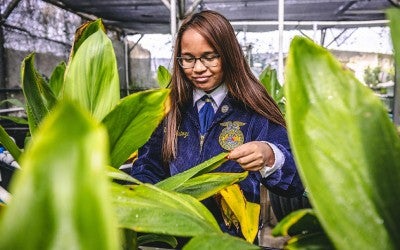 “In eighth grade, our FFA experience touched on community service and giving back to our community,” says Vheena Sistoza, who is now the Waipahu High School FFA Chapter president. “Mr. Kozuma took us on a lot of field trips around the community, and agriculture became a passion for me.”
“In eighth grade, our FFA experience touched on community service and giving back to our community,” says Vheena Sistoza, who is now the Waipahu High School FFA Chapter president. “Mr. Kozuma took us on a lot of field trips around the community, and agriculture became a passion for me.”
Waipahu High School operates under a career academy model, where students choose which education pathway they want to take, such as health and sciences, arts and communications, industrial and engineering technology, professional and public services, and natural resources. While many activities and interests vie for high school students’ time, and some students decide not to continue with agriculture (which falls under the natural resources pathway), FFA is finding ways to keep members engaged.
“I’ll definitely participate in FFA in high school,” Agos says. “It has given me so many opportunities to do new things outside the classroom, and another four years with FFA would really benefit my education.”
“FFA has shown me that agriculture can be hands on, but it can also be about advocacy,” Sistoza adds. “I realized that agriculture encompasses so much of our economy, and I keep learning more and more about how the world revolves around agriculture.”
Waipahu Intermediate FFA has seen some early success, too. In its first year in existence (2017-18), Waipahu Intermediate FFA saw five members qualify for the National FFA Agriscience Fair. In its second year, seven members qualified. Kozuma credits that success to members getting to choose an agriscience project that interests them and then putting in the hard work to see their projects through.
“They get to choose what they want to do, and I think that really helps to create motivation and passion,” he says. “I think the kids who are able to find success are the ones who are passionate about what they do and find a greater purpose in what they’re doing.”
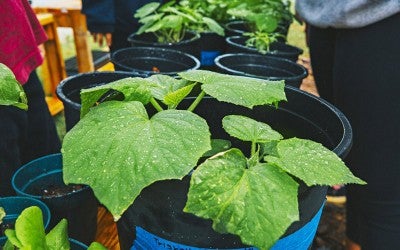 More Cool Hawaiian Chapters
More Cool Hawaiian Chapters
With 19 chapters across five islands, FFA is alive and well in Hawaii. Check out these five unique programs from across the islands.
- Kalani FFA (Oahu) offers a unique focus on robotics and received a FarmBeats kit from the National FFA Organization and Microsoft in 2018.
- Kapaa FFA (Kauai) is an emerging FFA chapter that is being revitalized after 30 years of dormancy.
- Lahainaluna FFA (Maui) is the oldest agricultural education program in the western U.S. and can date its ag classes back to the 1830s, almost a century before FFA.
- Molokai FFA (Molokai) serves the only high school on the entire island. Fun fact: The school mascot is the Molokai Farmers.
- Konawaena FFA (Big Island) was home to famous FFA alumni and astronaut Ellis Onizuka, who took an FFA emblem into space.
To see more on the accomplishments of Hawaii FFA, watch this video.

